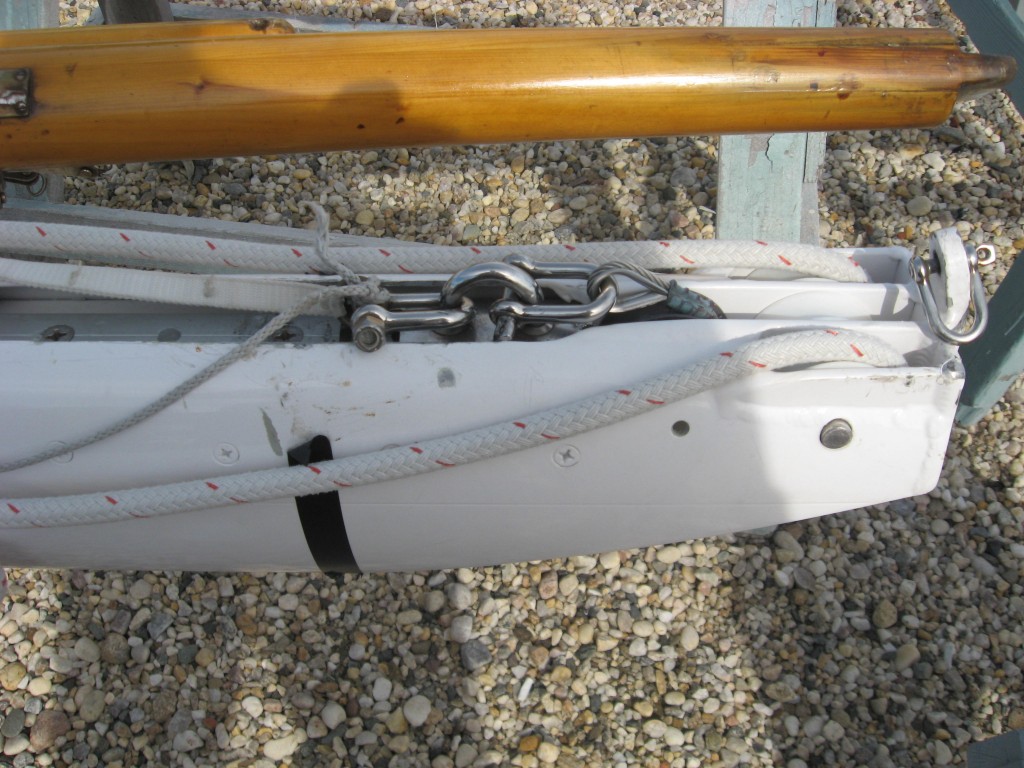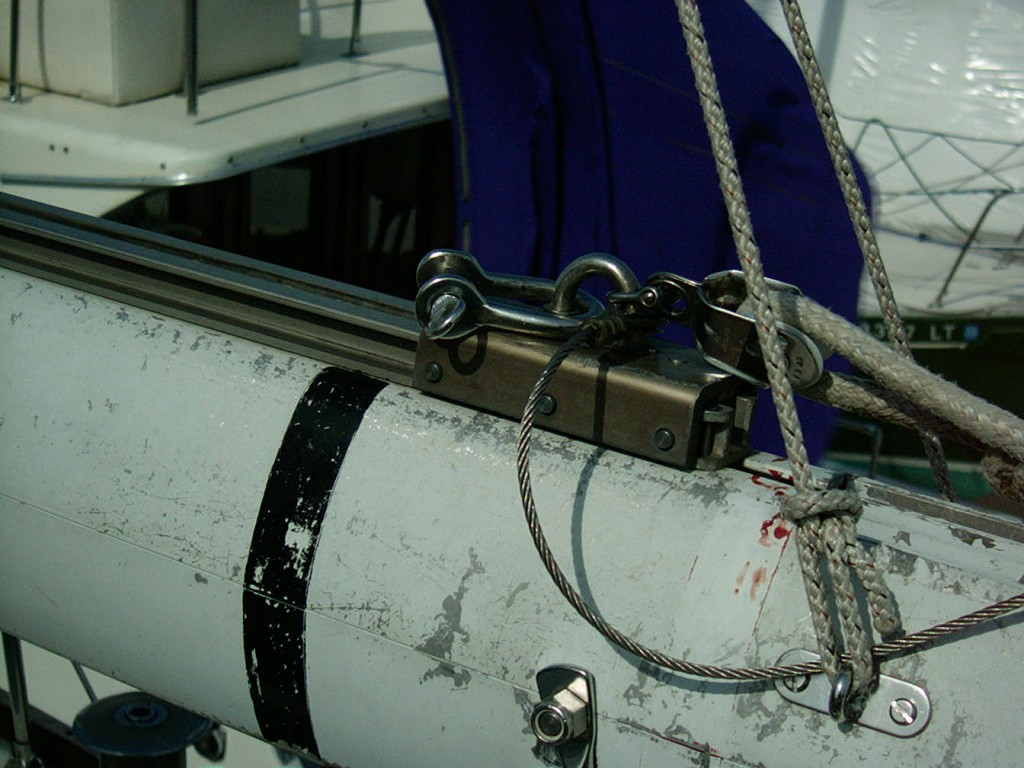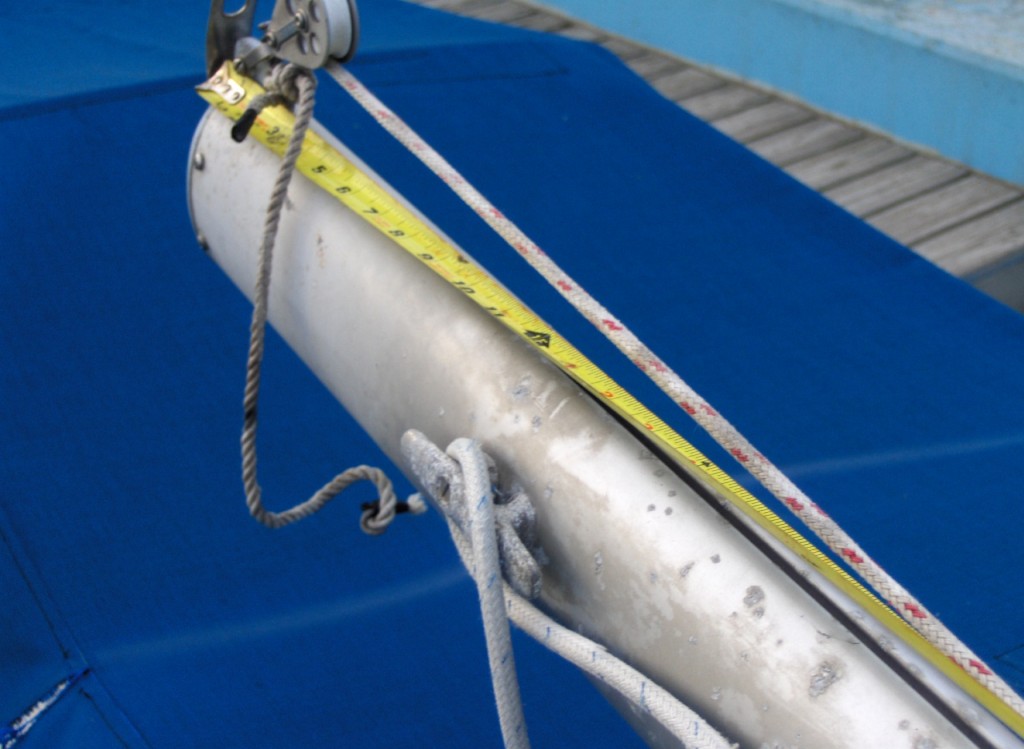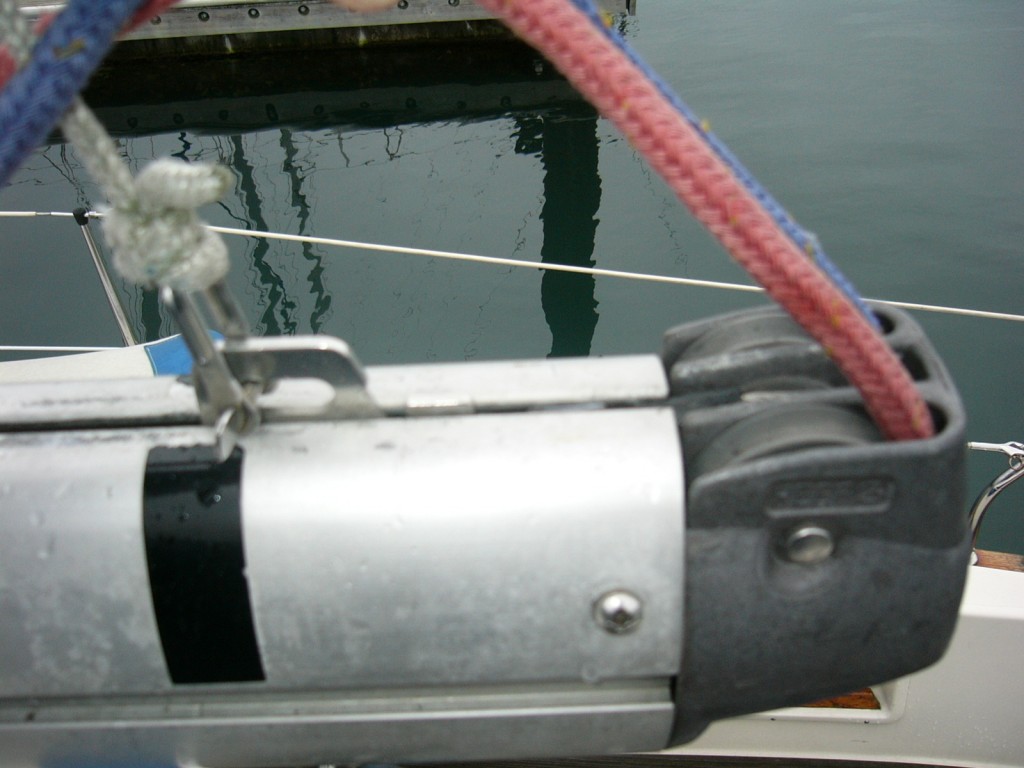In a previous post I discussed the “P” dimension and the parameters surrounding the correct luff length; This post discusses the “E” dimension.
The “E” dimension is the second dimension (the first being “P”) that the boat’s designer uses in order to arrive at a mainsail size that he wants, in order for the boat to do what the person who commissioned the boat wants to do.
The “E” is for the purposes of 99% of the folks reading this essay, the distance from the aft face of the mast, aft along the boom, with the boom at right angles to the mast, to the inside (forward) edge of a contrasting colored band at the aft end of the boom”. For the other 1%, there are some minute variations on this definition, under the ORR rule.
Again, like the P dimension, the E is NOT the foot length of the actual sail and it is NOT the actual boom length. The reason the P and the E are not the actual sail edge length has to to do with two primary issues. One is the hardware (on the mast and boom) by which the sail is physically attached to the spars and two, in most cases there is a deduction for stretch that sailmakers take or apply to a sail when designing it. This deduction is commonly different for each edge too.
As for the “P” let’s start with the “Black Bands.”
Some of these bands look like this.
And here (below) although the paint or black tape is wearing off in this picture:
Notice too in the above picture there is some space aft of the black band that “could” be used for sail outhaul. On the boom in the top picture the outhaul mechanism is fully extended, “two blocked”, as we might say, and the (bearing surface of the) shackle is just at the band.
And sometimes there is NO band. As here:
This next picture shows a detail than can be tricky:
Observe (in the above picture) just aft of the stainless fitting with the halyard attached, in the boom tunnel, there are a couple of unidentifiable fittings? These are the swages connecting the outhaul wire to the outhaul fitting. There is just enough room aft of the black band to apply some more tension before the swage gets sucked into the sheaves, like is happening on the boom shown below.

Sabre 38 clew band and outhaul mechanism. On this boat the swage is pulled right into the sheave with the shackle at the band. See how the swage is bending?
So to recap:
The E is NOT the sail’s foot length
It is NOT how long the Boom is
It is the distance from the aft face of the mast, aft, to the forward edge of a colored band on the boom.
It is not uncommon for there to not be a colored band particularly on “cruising ” boats rigs.
I will discuss the particulars of four other sail making details in a future post.
Tack Set Back, Tack Set UP, Reef ring set back & Clew set up




